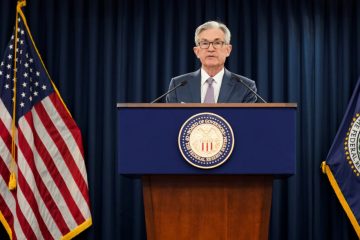Yen bruised as Japan’s rates gap widens with rest of the world

The yen hit a fresh 24-year low against the dollar on Wednesday, having taken another tumble overnight as U.S. bond yields continued to rise, in stark contrast to Japan’s stubbornly low interest rates.
Moves in major currency pairs were muted, but the policy comparison between Japan and the rest of the world was underscored by central banks around the world continuing to emphasize the need for higher interest rates.
The yen was last drifting at 136.4 per dollar, having hit 136.71 in early trade, the lowest since October 1998. Analysts see no immediate end to a sell-off that has seen the yen weaken 18% so far this year from 115.08 at the end of 2021.
The currency has been weakening as higher energy prices put pressure on Japan’s current account and because of the ever widening gap between yields on Japanese government bonds and U.S. Treasuries.
The Bank of Japan last week, maintained ultra-low interest rates and vowed to defend its policy of yield curve control (YCC), which effectively caps the yield on the 10-year Japanese government bond at 0.25%.
“Dollar/yen is continuing to trade on the Treasury yields, which have been stable but with the 10-year staying above the 3.20% level while the Bank of Japan has done a lot to defend YCC,” said Redmond Wong, market strategist at Saxo Markets Hong Kong.
Some investors had bet the BOJ would tweak that policy, which is causing ructions in Japan’s bond market, a move that would typically cause the yen to strengthen and Japanese government bond yields to rise.
Wong said because the BOJ had not changed its policy at last week’s meeting, these positions were now being unwound or reversed with some betting the yen would continue to weaken.
The yen has tumbled against other peers too and was last at 143.6 per euro, testing the seven-year low of 144.25 hit earlier in the month.
Elsewhere, the dollar index was little changed at 104.41, having been largely steady this week, as the yen’s declines were balanced by other currencies tiptoeing higher.
The euro was at $1.053, continuing to climb cautiously from its low of 1.0357, hit one week ago on the day the Federal Reserve raised interest rates by a large 75 basis points.
Sterling has also climbed very slowly and was last at $1.2257.
Wednesday’s main event is the start of Fed chair Jerome Powell two-day testimony to Congress, with investors looking for further clues about whether another 75 basis point rate hike is on the cards at the Fed’s July meeting.
Overnight, Richmond Fed President Thomas Barkin added to the bank’s hawkish rhetoric, saying Powell’s previous guidance of a 50 or 75 basis points rate hike in July is “reasonable.”
European Central Bank chief economist Philip Lane said the ECB will raise rates by 25 basis points at its July meeting, but the size of its September hike is still to be decided, suggesting a larger 50 basis points hike is possible.
The Australian dollar remained soft at $0.6948, as low commodity prices, such as iron ore, continued to weigh.
Bitcoin was at $20,600 struggling to break away from the symbolic $20,000 level in either direction, following recent declines.


